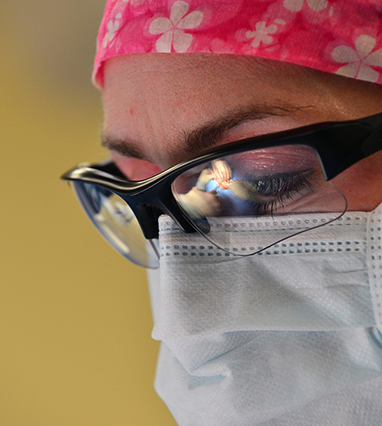Hiatus Hernia And Heart Burn(Gerd)
Hiatus hernia and heart burn
For patients with persistent symptoms requiring long term medication, surgery is an option, which is also a curative mode of treatment. Surgery can reconstruct the valve (LES) as well as repair the Hiatus Hernia, if present.
THE FOLLOWING ARE THE AVAILABLE SURGICAL OPTIONS :
- Laparoscopic surgery
- Conventional (open) surgery
- Aim of both the above procedures is the same, i.e repair of LES and /or Hiatus Hernia

How is Laparoscopic surgery for GERD different from open surgery ? Conventional (open) surgery for GERD requires a large muscle cutting incision which results in a long lasting painful scar. Laparoscopic surgery requires four to five tiny (5-10 mm) incisions to perform the same procedure. The advantages of Laparoscopic surgery are minimal post operative pain, short hospital stay and excellent cosmetic results.
How successful is the surgery? Worldwide experience has shown that over 90% of patients are symptom free after Laparoscopic surgical procedure for Gastroesophageal Reflux Disease. Most dramatic change that occurs is improvement in quality of life.
What can a patient expect following surgery?
After Laparoscopic surgery, patients can expect mild pain in their abdomen at the site of small incisions, which usually disappears in 24 to 48 hours. They may also have a feeling of difficulty in swallowing due to a newly constructed sphincter which goes away with passage of time.
POST OPERATIVE INSTRUCTIONS AND INFORMATION
- After the operation you will be kept in the recovery room. This period may vary from few minutes to few hours. The anaesthetist decides about your shifting to room. The decision depends on many technical factors.
- You will be sleepy immediately after the operation due to sedation given during anaesthesia and during the recovery period.
- You may have some discomfort when coming out of the effect of sedation. It gradually reduces to a tolerable level within a few minutes without any pain killer. However, if necessary you may ask for pain killer injections/tablets. You should try to avoid these drugs because they produce drowsiness and you may sleep for a longer period which is not desirable.
- You may feel nauseated in the immediate post-operative period, and you may even vomit which should not cause any worry. This generally gets over after few hours.
- You are generally allowed to have sips of water immediately after the operation and liquids on day of operation. In case of vomiting the liquid intake may be stopped and restarted after 30 minutes. The liquids may include water / cold drinks / tea / coffee / milk / juices or some clear soups.
- You will be provided with a diet chart for next few days and will continue on a soft diet for about 3 weeks.
- You should have small frequent meals for few days after operation following which you can resume your normal diet gradually. This is vital because you may feel bloated and distended if the quantity of food is in large quantities at a time.
- You should try to move the limbs and can sit up immediately after operation. You should also go to the restroom on your own. There are no restrictions whatsoever for the physical movement. In fact majority of the patients will feel much better after they have started the movement. The pain also dramatically reduces once you start sitting up, moving and walking.
- There is no restriction on your physical activity. You are allowed to walk as soon as you recover from your sleep. There is no restriction on climbing of stairs, lifting weight etc. You may even drive two wheelers or car as soon as you feel fit. This infact is one of the major advantages of the laparoscopic procedure.
- You will be discharged on the same day or next day of operation unless there is some associated medical/social problems. You are advised to visit again for follow up after 2-5 days when the dressings are removed. You should avoid wetting the dressings unless they are waterproof. After the removal of dressing, you can have normal bath with soap and water.
- In very few cases there may be some bloody/whitish discharge from the wound in the post operative period. This should not bother you because it is generally harmless. You can wipe the discharge and apply band-aid so as to avoid staining the clothes. If it is more you should report to the surgeon during the next visit. Please feel free to ask any question that may come to your mind.
WE WISH YOU A SPEEDY RECOVERY…
This is not a substitute for medical advice. In case of a query, please contact your Doctor.
